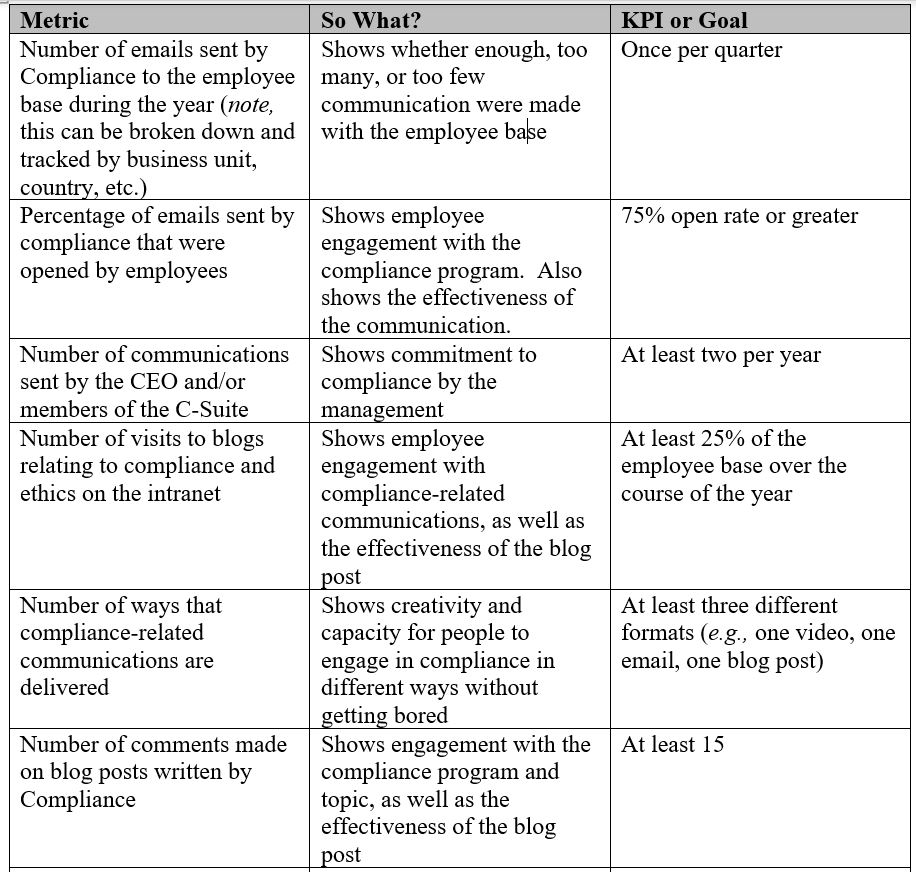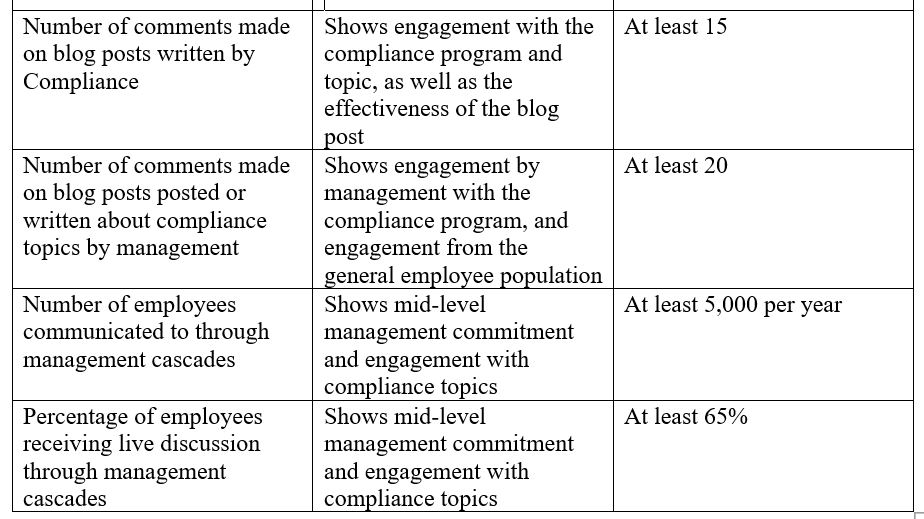Metrics that Matter: Part 7 – Communications and Tone from the Top
/George Bernard Shaw had it right when he said, “The single biggest problem in communication is the illusion that it has taken place.” Communication is a critical part of a compliance program. After all, without communication, how would anyone know the program even exists? And perhaps more importantly, without communication from the top management (and middle management), how would anyone know that the managers support the compliance program?
In this blog, we’re going to explore metrics relating to communications and tone from the top. This is Part 7 of our series. If you haven’t read Part 1, I recommend you go back and start there, as it sets the stage regarding why certain metrics should be chosen. We’ve already explored metrics that can be used with policies and procedures, which can be found HERE, monitoring and auditing, which can be found HERE, training, which can be found HERE, third-party risk management, which can be found HERE, and governance, which can be found HERE.
What Should We Measure?
When it comes to metrics relating to communication and tone from the top, there are three things you should measure. The first is the quantity and quality of communications made by compliance. The second is the quantity and quality of the communications made by top management. The third is the effectiveness of both of these types of communications as experienced and evidenced by the employees. All three of these areas should be measured so that you get a good overall picture of the communications element of the compliance program.
The Most Important Question - So What?
As with other programmatic areas, each metric needs context, so it tells a story. In addition, each metric needs to be tied to a goal or Key Performance Indicator (KPI), so you can tell if the trend is going in the right direction. Metrics without context are useless. When you choose a metric, make sure you ask, “So what?” If you can’t answer why the metric matters, or what the goal is for that metric, choose something else.
Examples
Following you’ll find example metrics for communication and tone from the top. Not all the examples will fit your program. Metrics, by their nature, need to be tailored so that they match the maturity of your program, the nature of your business, the size and geographical expanse of your business, etc. For each, a “So What?” answer and example KPI or goal is included.
Spot the Trends
Metrics relating to communications and tone from the top tell their story over time. A single snapshot is unlikely to give you large amounts of information, whereas the comparison of metrics month-on-month can tell a much fuller story. For instance, if in year 1, 50% of the employee population is communicated with about compliance through a management cascade, and in year 2, 65% are communicated to in this way, then the trend is going in the right direction, and the communications can be proven to be more effective.
Good metrics tell the story of your program. They show its evolution and give you confidence in its effectiveness.
Next time we’ll look at metrics relating to risk assessment. In the meantime, have an excellent week.
Want help developing your metrics, KPI’s or monitoring program? Send us an email at info@sparkcompliance.com for a free consultation (or visit our website at www.sparkcompliance.com).








